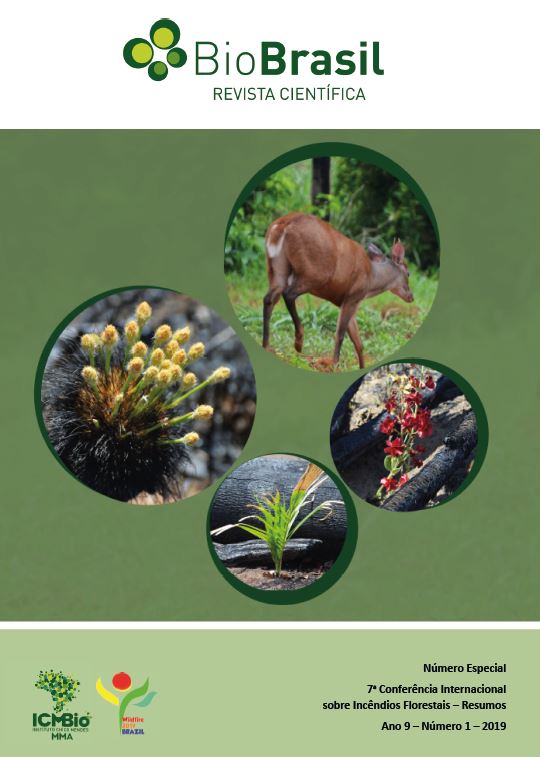The effect of various Fire management strategies on the occurrence and size of unplanned wildfires in a large African Savanna park
DOI:
https://doi.org/10.37002/biodiversidadebrasileira.v9i1.908Palavras-chave:
Accidental fires, fire history, fire suppression, integrated fire management, Kruger National Park, protected area managementResumo
Savannas cover approximately 20% of the global land surface. In African savannas, fire is an important agent controlling these ecosystems. Kruger National Park (KNP) is a large African savanna park which was proclaimed in 1926. KNP has implemented a variety of fire management strategies over time based on best available knowledge and resources at the time. Utilizing KNP's recorded fire history database, we used digitized hand-drawn maps and more recent, satellite-derived fire scar maps to determine the annual occurrence and spatial extent of unplanned fires in KNP between 1941 and 2017. Throughout 1941-2017, fires have been a regular, nearly annual occurrence in KNP even during eras in which fires were prohibited. During years in which the fire policy prescribed either to completely suppress fires or only allow "natural" lighting fires, unplanned wildfires were a regular occurrence and often burnt though large expanses of the park. By excluding fires in these landscapes by suppression or avoiding prescribed burning, fuel loads accumulate over time and result in substantial combustible material to support large unplanned wildfires. Therefore, fire management strategies influence the occurrence and spatial extent of unplanned wildfires in African savannas. Prescribed burning is a critical management tool which should be applied in fire-prone landscapes. However, to achieve the ideal prescribed burning programmed, research is needed in order to determine the appropriate fire regime necessary to manage a fire-driven system.
Downloads
Downloads
Publicado
Edição
Seção
Licença
Copyright (c) 2021 Biodiversidade Brasileira - BioBrasil

Este trabalho está licenciado sob uma licença Creative Commons Attribution-NonCommercial-NoDerivatives 4.0 International License.
Os artigos estão licenciados sob uma licença Creative Commons Atribuição-NãoComercial-SemDerivações 4.0 Internacional (CC BY-NC-ND 4.0). O acesso é livre e gratuito para download e leitura, ou seja, é permitido copiar e redistribuir o material em qualquer mídia ou formato.











